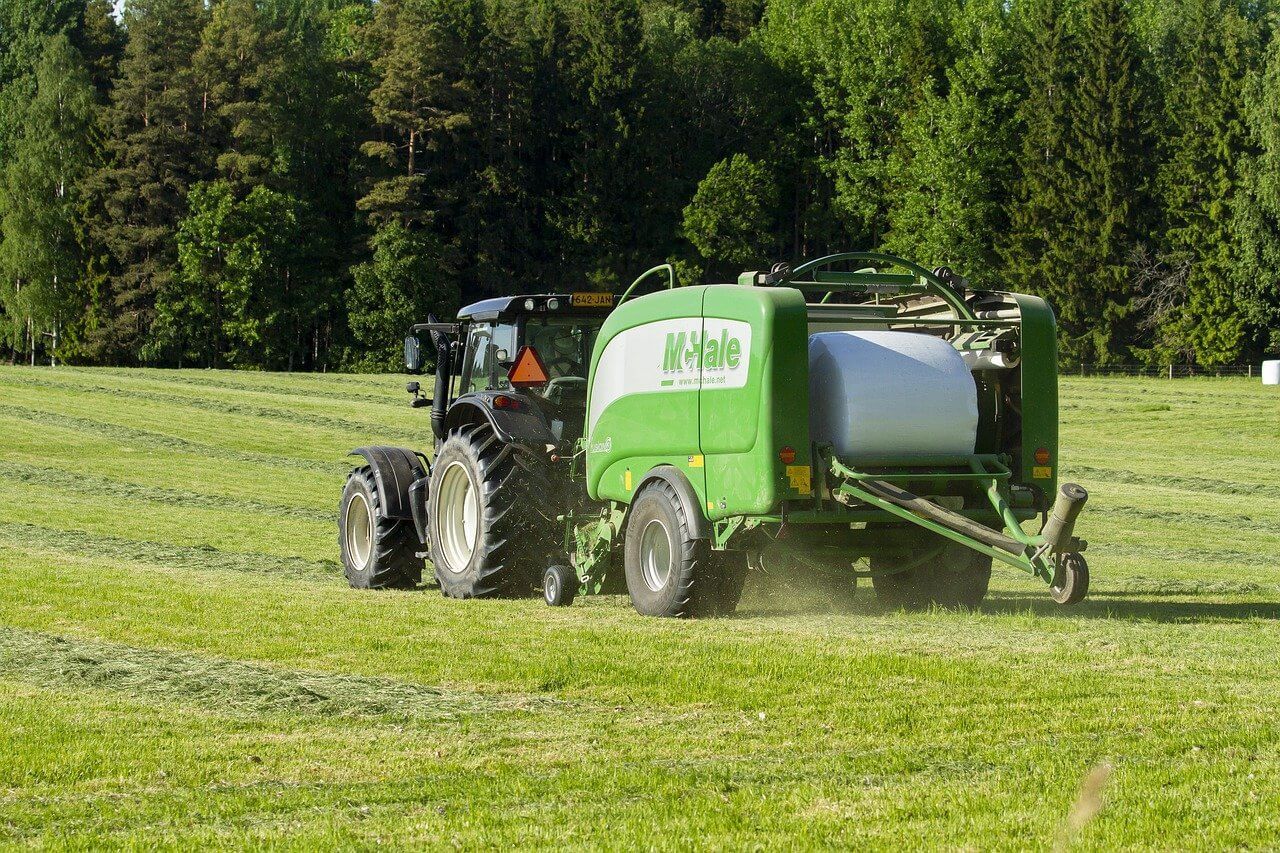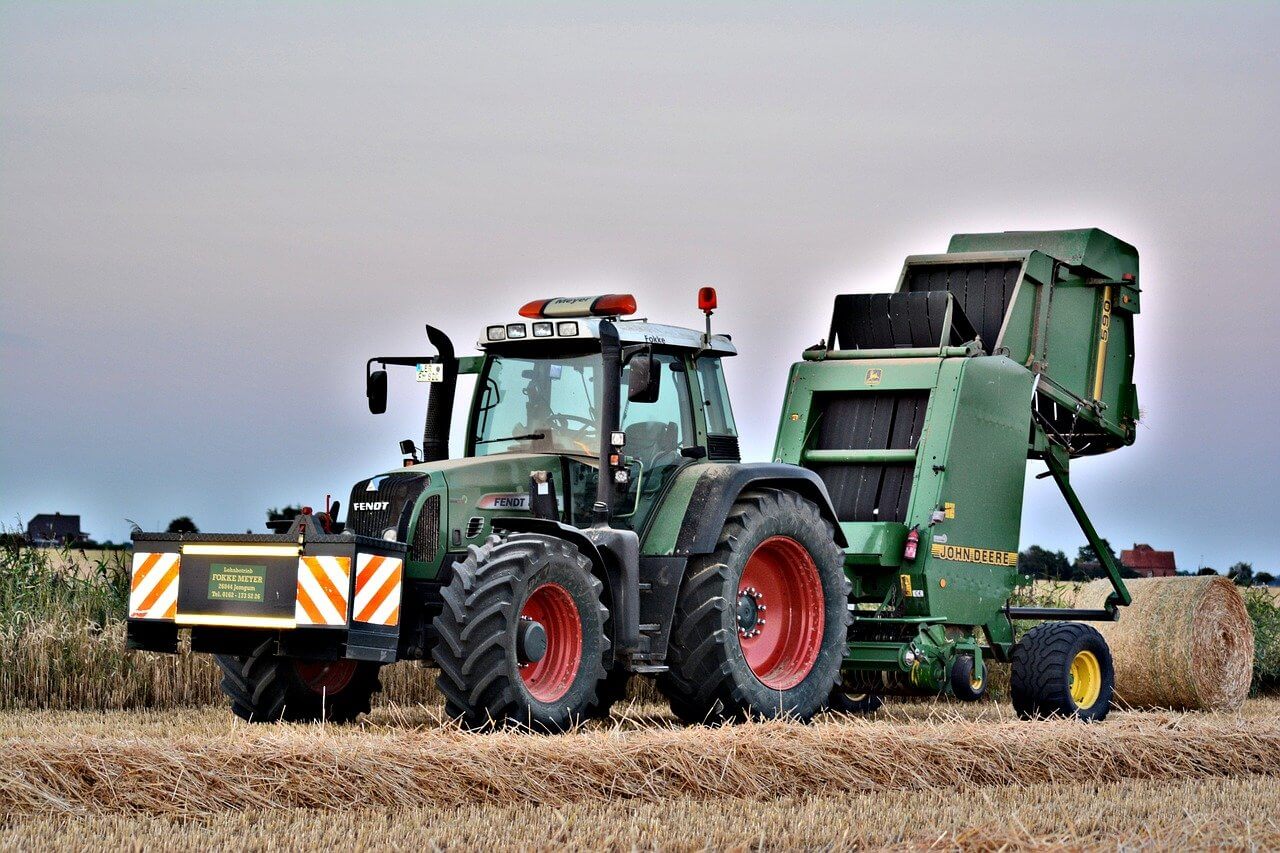Round balers are one of the most common pieces of equipment on hay farms. They produce high-quality round bales of harvested crops and have the functionality to wrap them just after pressing the hay together. They are efficient and effective, but that doesn’t mean that they are simple to operate. While it may seem like making hay is as simple as it gets on the farm or homestead, baling hay has aspects of art and science to master! Let’s see how we can operate round balers effectively.
What You'll Learn Today
Operating A Round Baler
When operating a round baler, there will be steps to take specific to your make and model. However, there is a general template for most round balers on the market, which we’ll take a look at here.
1. Hooking Up The Baler To The Tractor
First, you must hook up your round baler to your tractor. Put the tractor in neutral and hook up the hitch, PTO, and hydraulics to secure your baler to your tractor.
2. Loading Binding Material(s)
If you haven’t already loaded your bounding material into the baler, now is the time to do so. Some models feature twine, netting, plastic wrapping, or a mixture of these. Ensure that you load the binding material in correctly so the machine can work properly and binding the round bales happens without incident.
3. Last-Minute Checks
Do a final walkthrough to check that all belts, wires, and grease fittings are in proper order. Doing these each time you want to use your round baler will make upkeep that much easier and ensure that each time you go make round bales the machine is ready to function efficiently.
4. Starting A Bale
Drop the pick-up wheels to the desired distance from the ground. The wetter the crop, the lower the wheels should be to the ground typically.
Activate your PTO at the lowest throttle until you approach the first swath of crop you intend to bale. Once you stop directly above the start of the row, slowly ramp up the PTO throttle. The higher you go, the quicker the belts will spin which will allow faster harvesting of the crop.
Drive over the swath, ensuring the tractor tires stay aligned the entire time. Most balers do best with a speed between 12-25 mph, but this is highly dependant on swath size, moisture, and the power of your tractor and baler.
You don’t want to creep along and spend extra hours unnecessarily but you don’t want to drive so fast that you leave crops in the field.
Word Of Caution
Make sure to watch for plugs that will stop the baling process. Follow the specifications of your round baler to remove a blockage in the machine before continuing on.
5. Finishing A Bale
When the baler is full, it will alert you according to how that specific model works. Some models come with computer systems that will alert you directly in the tractor cab. Others will function differently, of course.
Once the round bale has reached the desired density, use the wrapping/binding function to wrap the twine, net, and/or plastic around the bales and expel it from the round baler.
Most round balers will follow this usage pattern but since each model is different, there may be slight adjustments in the baling process that must be accounted for. Make sure to read through the operation manual from the manufacturer and read about other’s experiences online.
How To Safely Use A Baler

A round baler can be used quite safely if common sense is applied when operating the machinery.
- Don’t stick your hands/feet/head around any operating machinery
- Follow the operating instructions to the T
- Only bale crops approved for your make and model
- Only use binding material made for your make and model
- Turn off all power when you need to perform maintenance or routine work on your machinery
- Wear PPE
Follow these simple rules and operating a round baler is quite safe!
FAQs

When Is PPE Required For Operating The Baler?
We’ve all seen the old school farmers out in the fields baling hay with no PPE whatsoever.
However, the safest scenario is to wear PPE whenever there is a slight risk for injury. That means being overly cautious and wearing PPE whenever you are operating a baler and tractor.
How Big Of A Tractor Do I Need To Run A Round Baler?
You have to ensure that you meet the specs put forth by the make and model of your round baler if you expect it to work properly.
However, if you want to ensure you get maximal performance, it’s best to run your round balers on tractors with more power, as these specs should be seen more like the bare minimum than the best possible setup.
For example, if a round baler requires 40 HP, a tractor with 60-80 HP would be better suited than a 40 HP tractor even though they would both meet the minimum specs.
How Much Horsepower Is Required For A Round Baler?
Typically, PTO-driven balers require between 30-120 horsepower for optimal functioning. It’s important to keep this in mind when shopping for a new round baler since you probably aren’t in the market for a new tractor too!
Final Words
Round balers are becoming more and more common as farmers turn to this style of hay bale over the traditional square/rectangle bales. While the small homesteader may not have the budget or need to purchase a round baler outright, renting one is a viable option as well.
Whether you plan to rent or buy, knowing how to operate this heavy machinery properly will lead to better bales and a safer experience for you. A win-win!